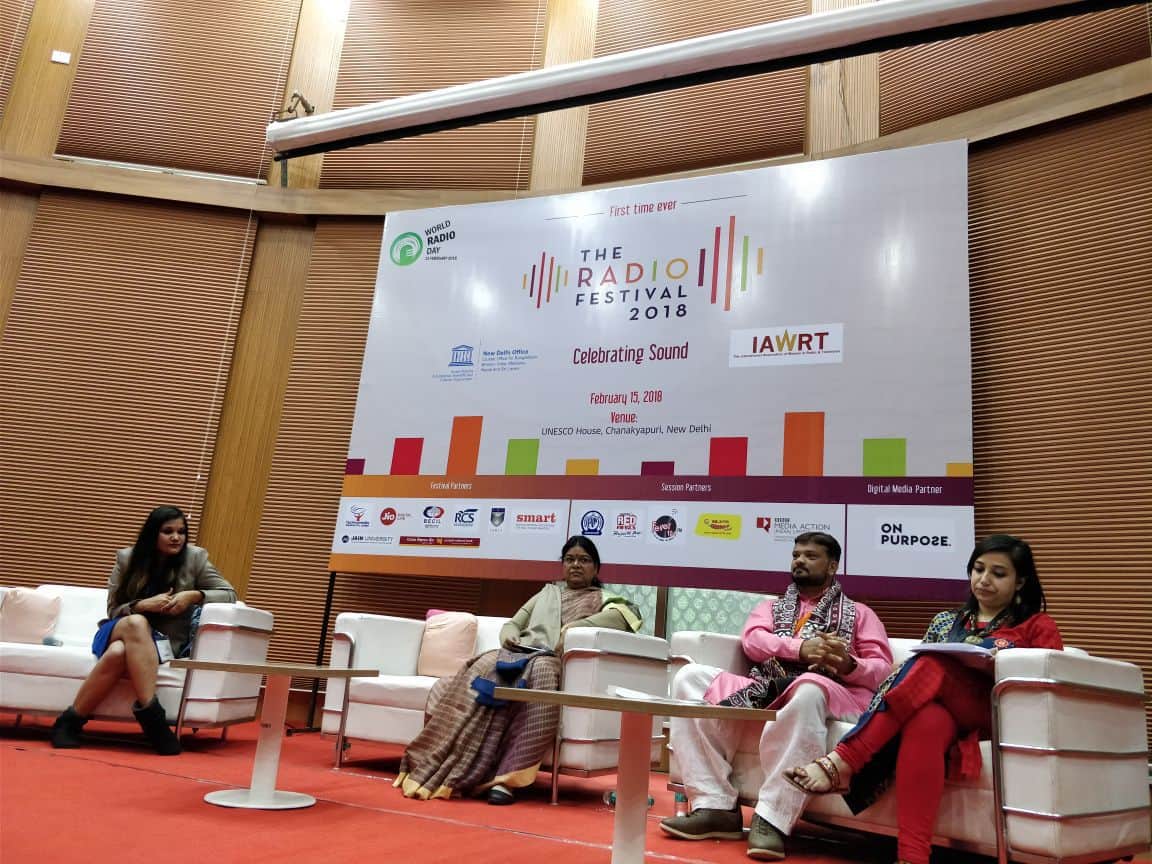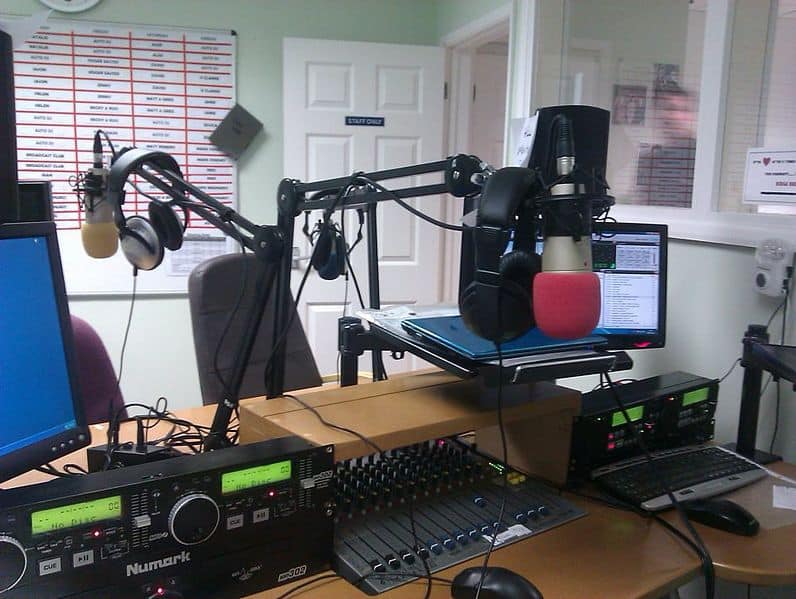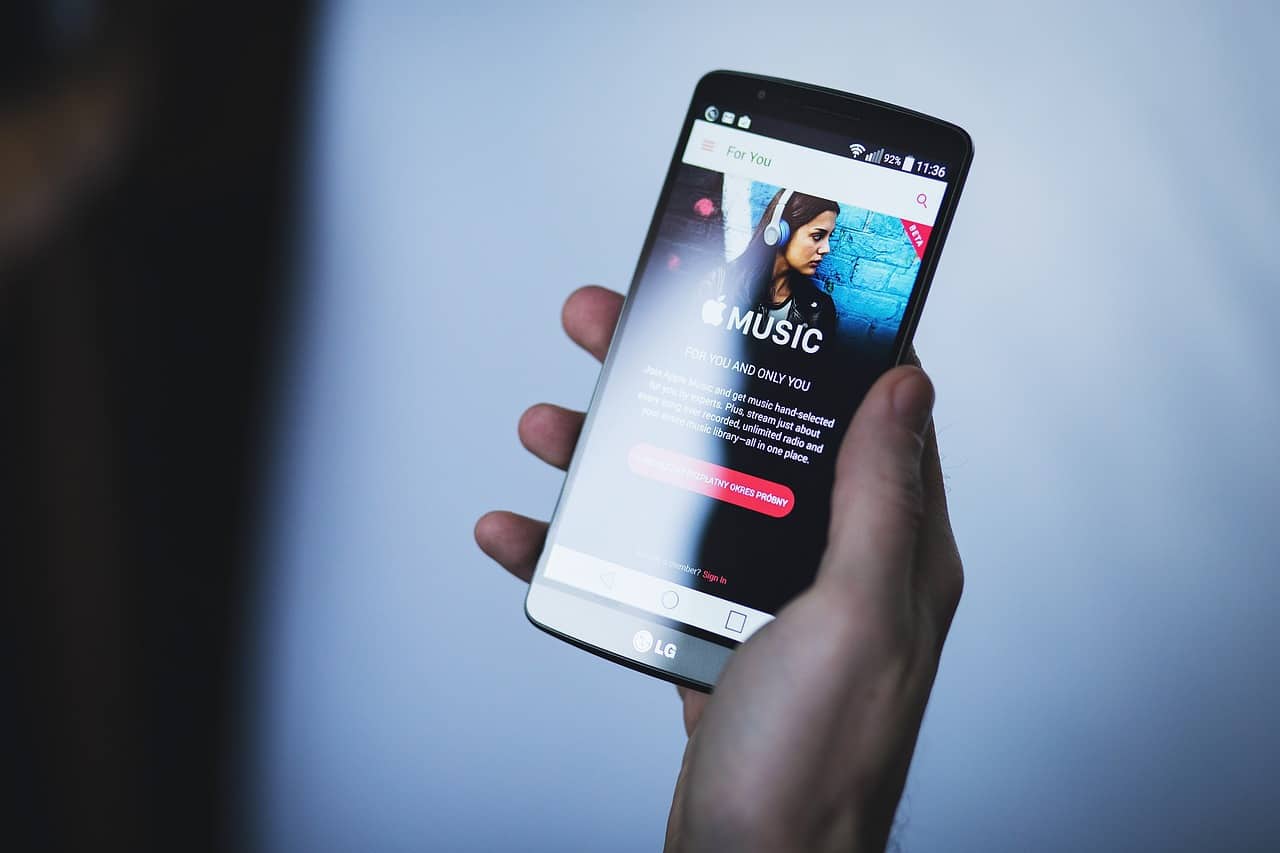Long before television, it was the radio that caught your ear and put it to the ground of the world. Never mind if it was a word, a note or even just a sound byte that floated into your mind. It chimed around in your head and drove home special, or even just informal, messages.
The celebration of the legacy and experience of that special wonder gadget, then, resonated with the diverse audiences at The Radio Festival (TRF), hosted by the International Association of Women in Radio and Television, partnering with UNESCO on February 15th, 2018, at New Delhi. The session partners are RedFM, Fever FM and Radio Mirchi, apart from AIR.
Organised by Archana Kapoor, Managing Trustee of the Radio Festival and community media broadcaster, Pinky Chandran, radio practitioner and Rukmini Vemraju, communication expert, TRF was held shortly after the World Radio Day on February 13. The idea was to pull public, private and community radio and audio works on to one platform.
The Radio Festival saw professionals, podcasters as well as digital audio programmers come together on a nodal platform, creating a sort of confluence of podcasting, streaming, audio publishing, digital audio and traditional radio.
The theme for World Radio Day 2018 is Sports, but at the TRF, diverse topics were dealt with through panel discussions, comedy shows, musical programmes and story sessions. The highlight was thematic gyaan by experts as well as well-known radio celebrities, through a dynamic and live space with a number of installed sounds and live performances.
The audiences too mirrored diverse social sections, including people from all ages, geographies, literary as well as linguistic origins. There were representatives from industry, NGOs, Private FM Radio Players, All India Radio, Community Radio Stations and the Ministry of Information and Broadcasting.
But why the Radio Festival?
What is the value of a Radio Festival anyway? “It’s about celebration,” says Pinky Chandran. “We realised that it would be a way of uniting the various tiers of the radio world that act in silos.” In the first of what is hoped to be a continuing annual event, it sought to unite various aspects of radio, industry and technology, so that each can act with and also fuel and power the other.
“Radio has helped to communicate voices that were never heard before,” she says, pointing further to the fact that the radio is an important platform for social change and creativity through storytelling and technological innovations in broadcasting and media convergence.
Why the radio at all?
Today, in a super-technological audio-visual world, why the radio at all? Because it is not only the first medium of far-reaching, social communication, but has also brought about exchange of news, views, voices and values, and often at defining moments in the nation’s history.
Do you remember waking up every morning to the tunes of AIR? An entire generation remembers celebrating as the radio proudly conveyed the news of the country’s independence, mourning over the death of Bapu, or much later, following every ball of Kapil Dev in a test series in 1980?
Yet, the radio goes beyond nostalgia. It is about social communication and creative thinking. It is about enhancing the value of sound in our lives, shutting off distracting visual images. There are sports lovers who watch matches on TV sets but mute them and turn to radio commentaries only for the listening experience!
There are over 200 odd community radio stations spread across the country today. In Gurgaon, the Gurgaon Ki Awaaz (GKA) is a civil society community radio station in the National Capital Region. Other urban radios include SalamNamaste in NOIDA, Radio Nazariya in Ahmedabad, CMS Lucknow, Radio Active in Bengaluru, Anna FM in Chennai, FTII and Vidyavani in Pune. These channels give voice to marginalized community groups, including migrant workers.
Many amazing messages also get filtered through community radio from remote corners of the country, from marginalised and fringe sections of society, according to Archana Kapoor, who has handled Radio Mewat in Haryana.
A UNESCO byte sums it up, saying: “Radio is specifically suited to reach remote communities and vulnerable people: the illiterate, the disabled, women, youth and the poor, while offering a platform to intervene in the public debate, irrespective of people’s educational level.”
Radio through phones
Today, the radio has become an important companion for people on the move. Whether you are affluent or deprived, urban or remote, the cheap as well as the expensive mobile set exposes you to a world of sound. That other technological revolution, the mobile phone, has actually made the radio more accessible. “It is the biggest innovation and means of entertainment for people who can hear even FM through it,” says Archana.
In remote villages, there are millions who might not even have electricity or radio sets. So mobile phones make information easily accessible to everyone. The more we build on it, the better it will become,” she says.
Challenges for radio
The main challenge today is that community and private channels are not able to broadcast two major pillars of popularity – news and sports! They are not even permitted to take feeds from existing main channel broadcasts. This is a major concern, according to Archana. Yet, radio is fairly popular. By questioning and raising their voice against the authorities at the helm of broadcasting policy, the hope is that these too could be covered by radio broadcasts, says Archana.
There have been some reports that suggest that AIR itself may be losing popularity among urban listeners, but it continues to have wide reach and provides diverse listening experiences to different sections of audiences, in the rural space as well as parts of the urban.
AIR’s first FM station was launched in 1977, but it did not get much attention. Private FM stations were slow to roll out, and the first 24-hour FM station appeared in India in 2002, years after major TV players had begun to call the shots.
The current buzzword is podcasts. If the government machinery is still trundling on, then podcast networks on science, culture, food history, genealogy, current affairs and religion are expected to give competition.
Future plans
What about radio tomorrow?
“The radio is here to stay,” says Archana, firmly. “It is relevant and is going to grow.” And this in spite of naysayers who have been trying to denounce the medium for a long time.
She adds that while young people today are getting hooked to radio, the attempt is to get more people on board and draw in a wide range of listeners. Images from TV have always been distracting, the attempt is to make people aware that they need to create their own images and reposition the radio in their lives.
The radio links people and evolves spaces for connections and expressions. The response has been overwhelming so far, and is expected only to grow, not diminish.


